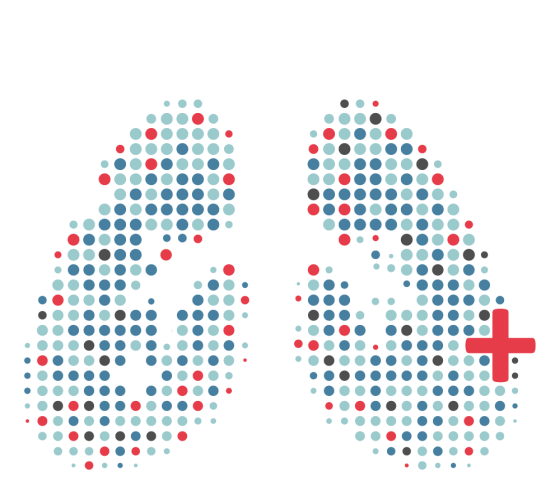SENTINEL Plus includes a package of resources to help clinicians to implement the 5 core elements of the intervention:

Healthcare Professional Education

Implementation of SENTINEL Plus ‘Gold Standard’ Prescribing Practice

Targeted Asthma Reviews

Patient Support and Education

Real-time Data Monitoring and Reporting of Asthma Care Metrics
SENTINEL Plus Aims & Objectives
SENTINEL Plus has been built with two core aims in mind:
1. Our aim is to improve asthma outcomes for our patients while reducing the environmental impact of asthma treatments by addressing SABA over-reliance, increasing appropriate anti-inflammatory treatment and implementing a maintenance and reliever treatment (MART) strategy for appropriate patients.
2. Reduce the environmental impact of adult asthma management through reduction in SABA over-reliance, reducing health care resource utilisation, and use of preventer dry powder inhalers (DPI) where appropriate.
Why SENTINEL Plus
SABA over-reliance is common and associated with poor asthma outcomes.
The level of SABA use in the UK is amongst the highest in Europe1 with ~38% of asthma patients potentially over-reliant on SABA inhalers (prescribed 3 inhalers or more each year).2
SABA over-reliance is associated with an increased risk of asthma exacerbations and premature death. In addition, it also has a significant negative impact on the environment.1,3-6
SABA over-reliance is associated with poor asthma outcomes and also has a significant impact on the environment.

Adapted from Bloom et al 2020
A retrospective longitudinal observation study (n=573,913) where data was pooled from primary care, hospital and mortality records (CPRD, HES and ONS) from 2007-2017. The study examined prescription patterns and the impact of SABA inhaler use on asthma related health outcomes in the UK.
* Defined as either asthma worsening that necessitated a short course of OCS (≤300mg; not during an annual asthma review or on days treated for other steroid responsive diseases - GP managed exacerbation), an Accident and Emergency (A&E) department visit for asthma, a hospital admission or death secondary to asthma

ǂ Janson et al, 2020 quotes 94% of SABAs prescribed are pMDIs. Calculation assumes that 100% of SABAs prescribed are pMDIs
Ɨ Calculated on the basis that an average diesel car emits 0.27901 kg CO2e per mile and that the length of an average car trip is 8.4 miles
†Over-reliance is defined as ≥3 inhalers/year (pMDI and DPI)
The SENTINEL Project
The SENTINEL Project is an on-going quality improvement initiative co-developed with clinicians and patients to improve asthma outcomes while reducing SABA-over reliance.
SENTINEL Plus is based on the SENTINEL project, an on-going quality improvement initiative undertaken in Hull and East Yorkshire, supported through a Joint Working Agreement between Hull University Teaching Hospitals NHS Trust and AstraZeneca UK. Pilot data from the SENTINEL project has demonstrated that implementation of a MART focussed asthma guideline can substantially reduce SABA prescribing and reduce the proportion of all inhaled therapies that are a SABA. 9,10
What the SENTINEL Project has achieved:

44,275 fewer blue inhalers issued 10

Equivalent carbon savings: 1,240 metric tonnes eCO2 †

Equivalent to 1550 transatlantic flights from Leeds to New York11
*Comparison with same period in previous year and includes a summation of year one SABA reduction from baseline and year two SABA reductions from the same initial baseline. The figure hence assumes that without the SENTINEL intervention prescribing of SABA inhalers would have remained unchanged from baseline in year one and year two. Figures also display SABA inhaler use across ALL respiratory patients and are not adjusted for changes in patient numbers during the assessment period. This project was initiated in a stepwise fashion across the primary care networks (PCNs) within Hull and East Yorkshire. These figures represent data to November 2022 in 6 primary care networks where initiation started in November 2020 for PCN 1, February 2021 for PCN2, June 2021 for PCN 3 and September 2021 for PCN 4, May 2023 for PCN 5 and December 2021 for PCN 6. These figures are based on the PCN footprints in 2021. Data extracted from open prescribing.
† Calculations assume that 100% of SABA inhalers prescribed were pMDIs. The average carbon footprint of SABA pMDI is 28kg eCO2 6
References
- Wilkinson, AJK et al. BTS Oral Abstract No: S26. Available from http://dx.doi.org/10.1136/thorax-2020-BTSabstracts.32 (Accessed July 2024)
- Janson, C et al. Adv Ther 2020; 37: 1124-1135
- Bloom, CI et al. Adv Ther. 2020; 37(10): 4190-4208
- Schatz M, et al. J Allergy Clin Immunol. 2006;117:995-1000
- Nwaru BI et al. Eur Resp J. 2020 55: 1901872; doi: 10.1183/13993003.01872-2019
- Janson C, et al. Thorax 2020;75:82–84. doi:10.1136/thoraxjnl-2019-213744
- UK Government GHG Conversion Factors for Company Reporting v1.3. Available from http://gov.uk/government/publications/greenhouse-gas-reporting-conversion-factors-2019 (Accessed July 2024.
- RAC. Available https://racfoundation.org/motoring-faqs/mobility (Accessed July 2024)
- Crooks, M et al. Impact of maintenance and reliever therapy (MART) focussed asthma guideline on SABA prescriptions. Abstract presented at European Respiratory Society (ERS) International Congress, 2021; Sep 5-8: Abstract no. OA80
- Open Prescribing. Available from https://openprescribing.net/pcn/U64827/measures/?tags=respiratory (Accessed July 2024)
- Flight carbon footprint calculator. Available from https://calculator.carbonfootprint.com/calculator.aspx?lang=en-GB&tab=3 (Accessed July 2024)
